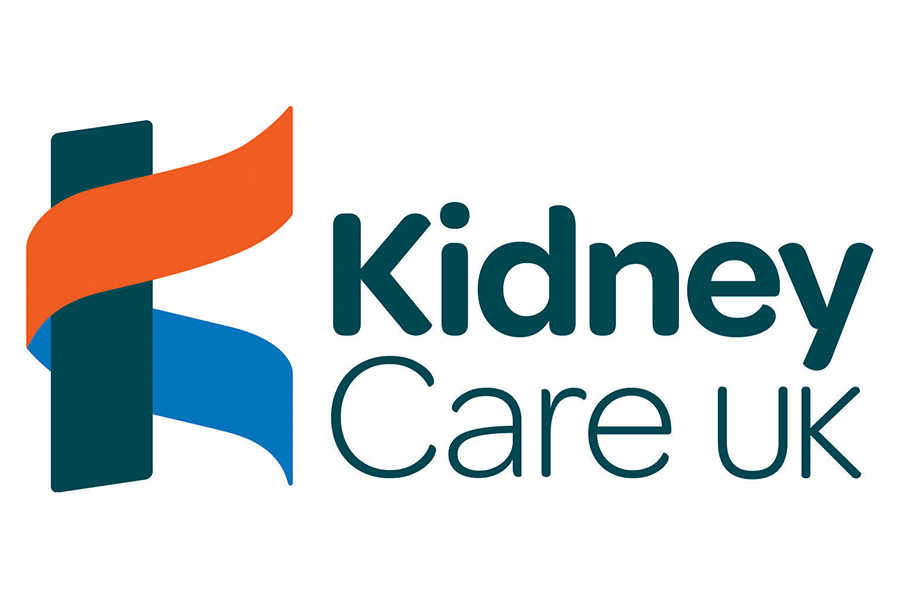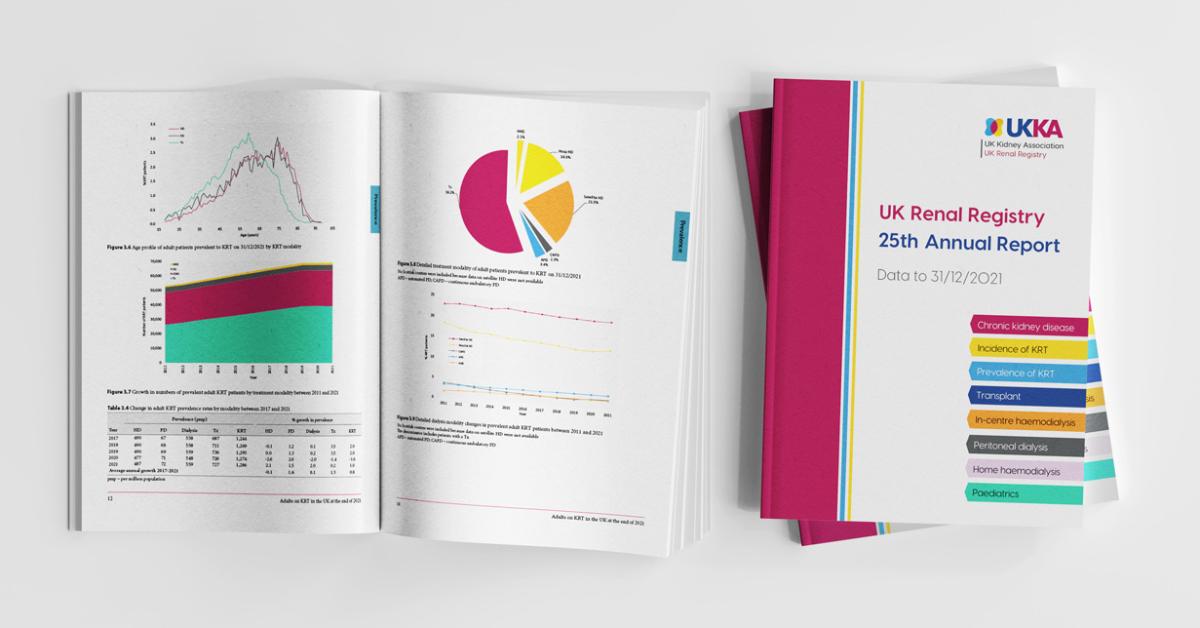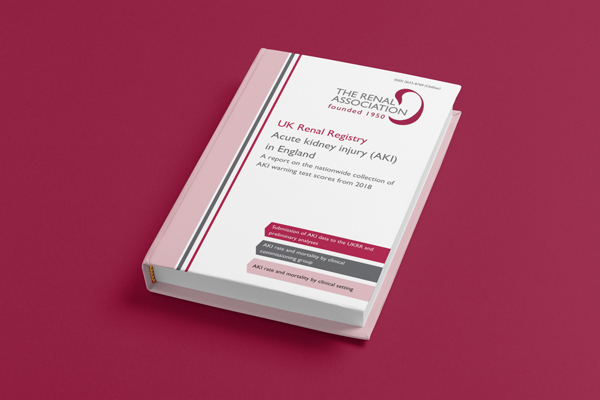Transplant First – transforming kidney transplants in the West Midlands
Dr Kerry Tomlinson Consultant Nephrologist, Royal Stoke University Hospital
In 2015, the West Midlands region had some of the longest waiting times for kidney transplants in the UK. The chances of a patient getting on the kidney transplant list before dialysis (known as pre-emptive listing) was lower than the average for the UK. Once, patients were listed for a kidney transplant, often they would wait more than three years for surgery. There were low acceptance rates for deceased donor kidneys which contributed to long waits on kidney units. Overall, the chance of a patient receiving a pre-emptive transplant in the region was lower than the national average for both deceased donor and living donor kidneys. Evidence shows that patients who wait too long for a transplant experience poorer outcomes than those whose wait is shorter. A long wait for a transplant may result in the patient needing to have dialysis, or may prolong dialysis. This can affect the cardiovascular system and reduce life expectancy. Until a patient is on the transplant list there is no possibility of them receiving a kidney, so getting onto the list promptly is crucial.
A compelling case for change
Transplant First was the region’s response to the problem. Initiated by renal specialists in the West Midlands and supported by the West Midlands Strategic Clinical Network, its aims were to increase access to transplantation for all suitable patients in the region. The project focussed on getting patients onto the transplant list promptly, as well as giving kidney units the opportunity to look at their processes, such as the way they manage living kidney donors. At the same time, surgeons at the transplanting units reviewed their criteria for turning down donor kidneys. The launch event in July 2015 brought together all seven renal units from across the region. The arguments for change were compelling, so there was no problem in getting buy-in for the project, as Consultant Renal Physician and Co-Lead of Transplant First, Kerry Tomlinson explained: “Not only are the outcomes better for patients who receive transplants rather than dialysis, but it is also significantly cheaper, saving up to £20,000 per year There was a great deal of energy and enthusiasm from renal units in the region to change things. Each unit was invited to share their challenges and successes around pre-emptive listing. We heard presentations from Aisling Courtney, a consultant nephrologist from Northern Ireland, explaining how they have improved transplant rates and also from the national lead on living donor transplants, Lisa Burnapp of NHS Blood and Transplant.”
Project aims
Building on the appetite for change among renal specialists in the room, Transplant First asked each unit to identify a project lead and to commit to sharing data openly. Letters were sent to the Chief Executives of each of the Trusts involved asking them to pledge their support to the project. Transplant First’s aims were for 95% of all patients starting renal replacement therapy to have a documented transplant status. It wanted more than half of all patients on the transplant list to be pre-emptive (i.e. on the list before they started dialysis). The aim was for the West Midlands to have the highest rate of pre-emptive listing of any region in the UK and to be in the top 50% of units for pre-emptive transplants.
Identifying the cause of delays
One of the first pieces of work undertaken by the project was to create an enhanced dashboard for renal patients. The units were already returning information to NHS England, via the Renal Registry, showing the proportion of patients who start dialysis with a documented transplant status. The enhanced dashboard now asks them to specify the reason for each patient who does not have a decision, or who is suitable for listing but hasn’t yet made it onto the list. In this way, renal units can see more clearly what is causing delays or for patients to be missed off the list. This information was shared with Transplant First and provided valuable feedback, as Kerry Tomlinson explained: “Most of the units believe they were referring patients for transplant listing in a timely way and yet the data showed otherwise in many cases. Patients were not making it onto the list pre-emptively because referrals were being made late. Having more detailed data allows individual units to see patterns. For example in my unit a particular clinic was identified as referring late, in larger units individual feeder hospitals tended to have different referral patterns. There were inconsistencies, too, in the way that different units were treating patients, for example, such as the timing of cardiac catheters. Armed with this information, we were able to discuss the findings and share good practice. We used this to redesign the patient pathway and create a set of standards for the whole region.” The standards were devised by a dedicated standards working group, led by Nick Inston. They set out the procedure for patient referral for transplantation listing, including specifying what constitutes a late referral, The standards also outline which information should be given to the patient, when consent should be obtained, when cardiovascular assessment should take place and the conditions under which patients are to be suspended from the list.
Redesigning pathways
The Transplant First team worked with external consultants to facilitate two pathway redesign workshops. There were some tensions in the first workshop as participants were eager to move onto agreeing practical improvement measures rather than discussing theory and it was felt that there was too much focus on the latter. The second workshop was more hands-on but still required some quite robust conversations about what was important to the participants. The group was inspired by hearing a powerful patient voice. A local kidney transplant recipient explained what it is like to be waiting for a kidney transplant, saying: “When my kidneys failed, getting a kidney transplant became the most important thing that I had ever wanted in my life. I have never wanted anything more and never will. Each step of the way I was accompanied by a desperate longing for it to happen, and every setback and delay was something I felt acutely, and caused a lot of anxiety." During the workshops, certain traditional hierarchies became apparent, as well as people’s perceptions about the way certain units function. Transplant First Project Manager, Cecily Hollingworth from the West Midlands Clinical Network helped to manage this dynamic: “The aim of these workshops was to create a system that works for most of the people most of the time. It was the first time all of the units had come together in this way to discuss processes and, understandably, there were some differences of opinion. There was also a certain amount of impatience to get on with implementing improvements. The first workshop gave people permission to challenge things and question things, which was really helpful. People spoke about things that cause them problems on a day-to-day basis, such as the way that transitions between renal units and the transplant unit are managed, and made agreements between each other that would streamline the process.”
Small changes, big impact
Some of these improvements were relatively minor but the potential impact is likely to be significant. For example, the project identified the fact that referral letters were sent to named surgical consultants at one of the transplant units as a potential cause of delay. If that person was not around to respond, no action would be taken until they were next at their desk. By sending a generic email instead, this could be avoided and action could be taken by colleagues in their absence. High rates of DNAs (Did Not Attend) was another contributory factor to delays and the inclusion of patient mobile numbers in the referral letter means that units can now send a text reminder of their forthcoming appointment.
Streamlining processes
Somewhat more controversial was the decision to run the process of approving potential living donors alongside the process of approving patients for transplant. Kerry Tomlinson explained: “It can sometimes take between three and six months to approve a prospective living donor as there are lots of tests that need to be carried out. Some units were waiting until patients were finally approved for transplant listing before starting these tests as it was felt that time and resources would be wasted if the patient was not approved. The impact of this was long delays and a missed opportunity for pre-emptive living donor transplants “Other units would begin the process if they believed it was likely that the patient would be suitable for transplant listing, running tests on potential donors at the same time as getting the patient approved for transplant. Some renal staff were reluctant to change their approach but we kept asking them to consider what would be better for the patient. As a result, the living donor tests now get underway even before the patient is formally approved for transplant to ensure that the process is as quick and streamlined as possible.” Alongside these region-wide changes, individual units made specific changes based on the causes of delays that they had identified. Data is fed back to them quarterly so they can see how they are performing and what still needs to be improved.
Impacts
The impact of the Transplant First project is still being evaluated and its effect on pre-emptive listing will not be seen until the release of 2016/17 data. However, early indications suggest that the proportion of patients in the West Midlands starting dialysis with a decision regarding their suitability for transplant has risen. During the project, it rose from an average of 71% in the third quarter of 2014 to an average of 88% in the fourth quarter of 2015.
The Transplant First project recognised that reducing waiting times for kidney transplants is not a quick fix but it has now become a priority for all of the units in the region. Waiting times are showing a downward trend. In 2013/14, there were 1,735 people in Birmingham and 1,205 in Coventry waiting for a transplant. The latest data (2015/16) shows that this has come down to 1,284 and 1,041 respectively. There is further to go.
There has also been a significant reduction in the decline rates for deceased donor kidneys in Birmingham down from 66% in 2011 and 72% in 2012 to 52% in 2015 and 53% in 2016.
In Summer 2016, the seven units that took part in Transplant First attended an audit event and presented an update of how they were doing. All units said they had experienced improvements in communication and working relationships between referring units as a result of their involvement in the project. Units were very proud of the collaborative nature of the work and the focus on improving the patient experience.
The Transplant First team also created a workstream, led by Helen Spooner, which looked at standardising the information provided to patients in the region. Hearing from patients was one of the most powerful elements of the project. Patients, including donors, said it can sometimes feel like they are being kept in a holding pattern as they wait for information. As a spin off from this, Transplant First is now working with the UK Renal Registry to oversee the development of Donor View, an online portal enabling potential kidney donors to monitor their progress along the kidney donor pathway to transplantation. 0 500 1000 1500 2000 2013-14 2014-15 2015-16 Median waiting time (days) Birmingham Coventry 0 20 40 60 80 100 % DBD donor kidney offer decline rates in Birmingham (%) DBD donor kidney offer decline rates (%) Birmingham (standard) DBD donor kidney offer decline rates (%) Birmingham (extended)
Challenges and successes
The Transplant First project was not without its challenges, ranging from IT incompatibilities through to shortage of consultants and nurses to drive the process, however overall the units involved welcomed the opportunity to work together to streamline the transplant process and make things better for patients. It was the first time that the regional renal units had had an opportunity to come together in this way and closer collaboration has resulted in improved working practices and the opportunity to work through challenges together. Cecily Hollingworth said:"All seven units in the region came together to process map the patient’s journey. This made such a difference to understanding how things are for patients and the challenges that each of them face. There was a niggling issue about the way information is sent from the referring unit. It was discussed and a new way forward was agreed there and then
Participants in Transplant First were particularly inspired by hearing from Aisling Courtney about work to improve kidney transplants in Belfast and also by hearing patients talk frankly about their experience of waiting for a transplant. Cecily commented: “It was powerful to hear patients share their stories and this helped to generate enthusiasm for change at the outset. We would also have liked to involve patients in redesigning pathways but this proved less successful. We asked for patient input but I felt we could have been more creative in our approach. If we did it again, this is something I would like to do differently. It would have been better to talk to other organisations about how we could meaningfully involve patients before we embarked on the project.”
Another important success factor was the project’s focus on data and measurement. Cecily explained: “It was quite telling to see what information the units were willing to share in the beginning. At first there was tendency to try and justify the reasons for delays, but the data showed quite clearly what was causing hold ups in kidney transplants and in order to make a difference to waiting times and pre-emptive listings it was imperative for the units to look at these causes and do something about them.”
Developing a set of regional standards and guidelines has helped to bring consistency to the way patients are managed and to streamline processes. One of the factors that Cecily hopes will improve processes further is the inclusion of optimum timescales. “There has been a reluctance to specify how long different parts of the process should take,” she explained, “as there has been a great deal of focus on the more complex cases and a tendency to err on the side of caution. Renal units are wary of committing to timescales as they are keen to manage the expectations of patients and commissioners. However, I am hoping that there will be some optimum “good faith” timescales in the guidelines in future to help provide clarity, while recognising that there will always be exceptions.”
As with any service improvement project, commitment from participants and clear project management were essential for success. There were regular project team meetings and the partnership board met quarterly. Actions were regularly reviewed and progress noted A recent survey confirmed that most units found the project beneficial but the challenge is to provide on-going support at the level they need to maintain momentum.
Kerry concluded:
“There is no doubt that healthcare professionals are highly motivated to improve patient care. What the Transplant First project has done is to show us where care needs improving and give us the skills, time, information and permission to make change. The next step is to make some of the resources - such as the data collection tools -available to other units and regions who want to make similar changes."






